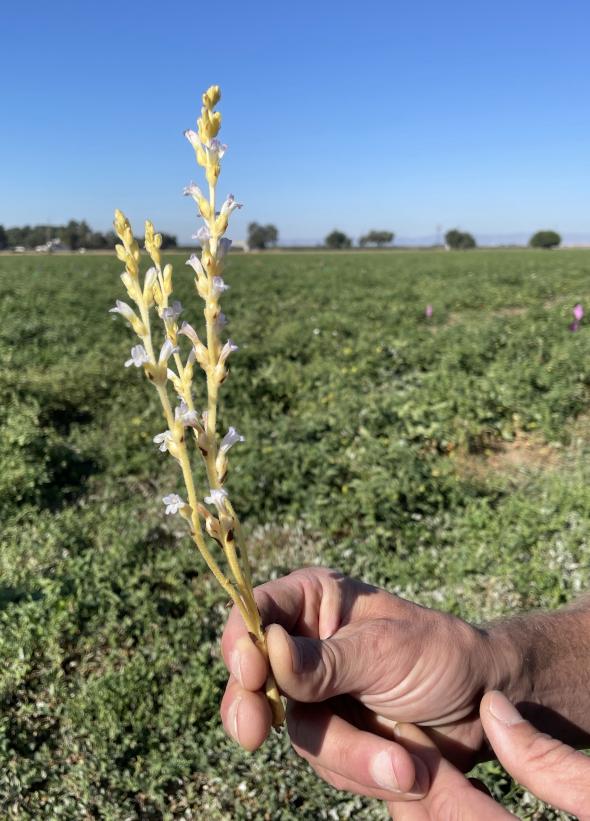Attack of the Parasitic Weeds!? Red Alert for California Tomato Growers
At first glance, Orobanche ramosa looks like an interesting blossoming plant, one that could add a unique flair to flower arrangements. But it’s a parasitic weed that attaches to roots, sucks out nutrients and is threatening California’s $1.5 billion processing tomato industry.
The weed’s tiny seeds — smaller than finely ground pepper — can survive in soil for many decades and be carried by wind, water, soil transfers and even footwear. If found attached to crop plants and reported to the state, farmers are required to destroy the field before harvest, taking large losses not covered by crop insurance.
Its resurgence is concern for state regulators and industry, which is helping fund multidisciplinary research at the University of California, Davis, on ways to detect, manage and fight the weed.

An up-close look at Orobanche ramosa, a resurgent parasitic weed that poses a threat to the California tomato processing industry.
Photo by Emily C. Dooley
“Most of the damage occurs before you can see it,” says Brad Hanson, a Professor of Cooperative Extension in plant sciences, who is involved in much of the Orobanche research at UC Davis. “There’s a lot of ripples to the problem. We could see it spread to other crops and other regions in the state if it’s not managed.”
Across three colleges at UC Davis, researchers are working on ways to detect the pest, manage it in the field throughout its life cycle, and develop long-term solutions to minimize the threat to California agriculture. The work is happening in labs and the field, using drones, human spotters, and new techniques to sniff out volatile organic chemicals that are emitted when the weed is present.
They are also testing ways to sanitize farm equipment to reduce the risk of spreading seeds from contaminated fields to clean ones. And they are testing dozens of other crops to see if they are susceptible or could be used as false hosts to kill off the Orobanche seeds in the soil.
The California Department of Food and Agriculture and industry had a program from the 1950s through the 1970s to eradicate the weed, which is commonly known as branched broomrape. But the weed showed up again in Yolo County in 2017.
At high infestation levels, Orobanche can reduce crop yields by as much as 80%, which is a tremendous threat considering California farmers grow roughly 95% of all processed tomatoes.
It’s hard to know quite how far Orobanche has spread.
Yolo County farmers reported 71 to 403 acres affected between 2017 and 2022, with some years seeing less and others more. No cases have been reported this year, Yolo County Agriculture Commissioner Humberto Izquierdo says.
But Orobanche weeds could be sprouting up elsewhere.
For more, continue reading at ucdavis.edu.









